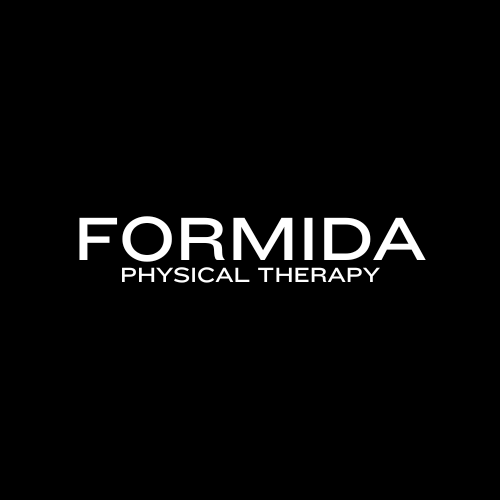3 Important Fitness Metrics That Help You Live Longer and Stay Stronger
- Formida Physical Therapy
- Jun 20
- 4 min read

Most people think about health in terms of weight, blood pressure, or how they feel day to day. But research shows there are other numbers that give us a better idea of how well our bodies are aging. At Formida Physical Therapy, we use three key health and performance markers that help our patients stay active, strong, and independent for longer.
These three markers are grip strength, power, and VO₂ max. They are simple to measure and backed by strong science. More importantly, they can help predict your quality of life as you get older and are highly linked to how long you live.
1. Grip Strength: A Simple Test With Big Meaning
What is grip strength?Grip strength measures how strongly you can squeeze something with your hand. It may sound simple, but it tells us a lot about your whole body.
Why it matters: Studies have found that people with lower grip strength are more likely to suffer from health problems like heart disease, stroke, and even early death. A study from the Lancet journal found that grip strength was a better predictor of death than blood pressure in some people (Leong et al., 2015).
Grip strength also gives us clues about muscle loss, also known as sarcopenia, which often starts around age 40 and speeds up over time. Losing muscle makes everyday tasks harder and increases your risk of falls.
What you can do: Grip strength improves when you do regular resistance training, like lifting weights, using resistance bands, or even carrying heavy groceries. At Formida, we test grip strength as part of our assessments to track your progress and overall strength levels.
2. Power: How Fast Your Muscles Can Work
What is power? Power is the ability to move quickly and forcefully. It combines strength and speed. For example, standing up quickly from a chair, jumping, or pushing something fast all require power.
Why it matters: As we age, our muscle power drops faster than our strength. This can lead to slower walking, trouble getting up from the floor, and a greater risk of falling. Additionally, can lead to decreased readiness during awkward lifts or motions outside our day to day that could cause injury. A study in the Journal of Gerontology showed that lower leg power was strongly related to poor balance and mobility in older adults (Bean et al., 2002).
Power is especially important for athletes and active adults who want to keep playing sports, running, or doing activities that require quick movements. Even if you feel fully recovered from an injury, your power may still be lower than it should be.
What you can do: Exercises like sprints, fast step-ups, kettlebell swings, and various jumping movements can improve and preserve muscle power. Thankfully, we can improve this at any age! At Formida, we use tools like force plates to test and improve your power safely and effectively. We also use custom strength programs to help you regain what you may have lost after injury or inactivity.
3. VO₂ Max: A Measure of Heart and Lung Fitness
What is VO₂ max? VO₂ max stands for the maximum amount of oxygen your body can use during exercise. It is a measure of your cardiovascular fitness, which includes how well your heart, lungs, and muscles work together when you are moving.
Why it matters: A higher VO₂ max is linked to a lower risk of heart disease, stroke, diabetes, and even some cancers. A study in the Journal of the American College of Cardiology found that cardiorespiratory fitness (VO₂ max) was one of the strongest predictors of long-term survival in healthy and unhealthy people (Ross et al., 2016).
VO₂ max tends to decline with age, but the good news is that it can improve with consistent aerobic training like walking, biking, or running.
What you can do: Interval training, longer cardio sessions, and even brisk walking can help improve VO₂ max. We can guide you through a safe and effective program to raise your cardiovascular fitness, using movement tests to track progress and personalize your plan.
How We Use These Metrics at Formida Physical Therapy
At Formida Physical Therapy, we believe in more than just treating pain. We want to help people move better, feel stronger, and live longer. Whether you are recovering from surgery, getting back into sports, or simply want to stay healthy as you age, these three metrics; grip strength, power, and VO₂ max; are part of how we guide your care.
We use force plates, strength tests, and movement screens to measure what matters most. This data helps us create custom plans for recovery, training, and performance. It also gives you clear, simple feedback to stay motivated and know exactly how your body is improving.
Want to Know Your Numbers?
If you are curious about your grip strength, power, or VO₂ max, we offer performance assessments and training plans to help you improve them. Whether you are an athlete or just want to stay active without fear of injury, we are here to support your goals.
Contact us today to schedule your first visit and take the next step toward long-term health and performance.
References:
Leong, D. P., Teo, K. K., Rangarajan, S., et al. (2015). Prognostic value of grip strength: findings from the Prospective Urban Rural Epidemiology (PURE) study. The Lancet, 386(9990), 266-273.
Bean, J. F., Kiely, D. K., LaRose, S., Alian, J., Frontera, W. R. (2002). Are changes in leg power responsible for clinically meaningful improvements in mobility in older adults? Journal of Gerontology: Medical Sciences, 57(10), M508–M513.
Ross, R., Blair, S. N., Arena, R., et al. (2016). Importance of assessing cardiorespiratory fitness in clinical practice: a case for fitness as a clinical vital sign. Journal of the American College of Cardiology, 67(5), 576–588.




Comments